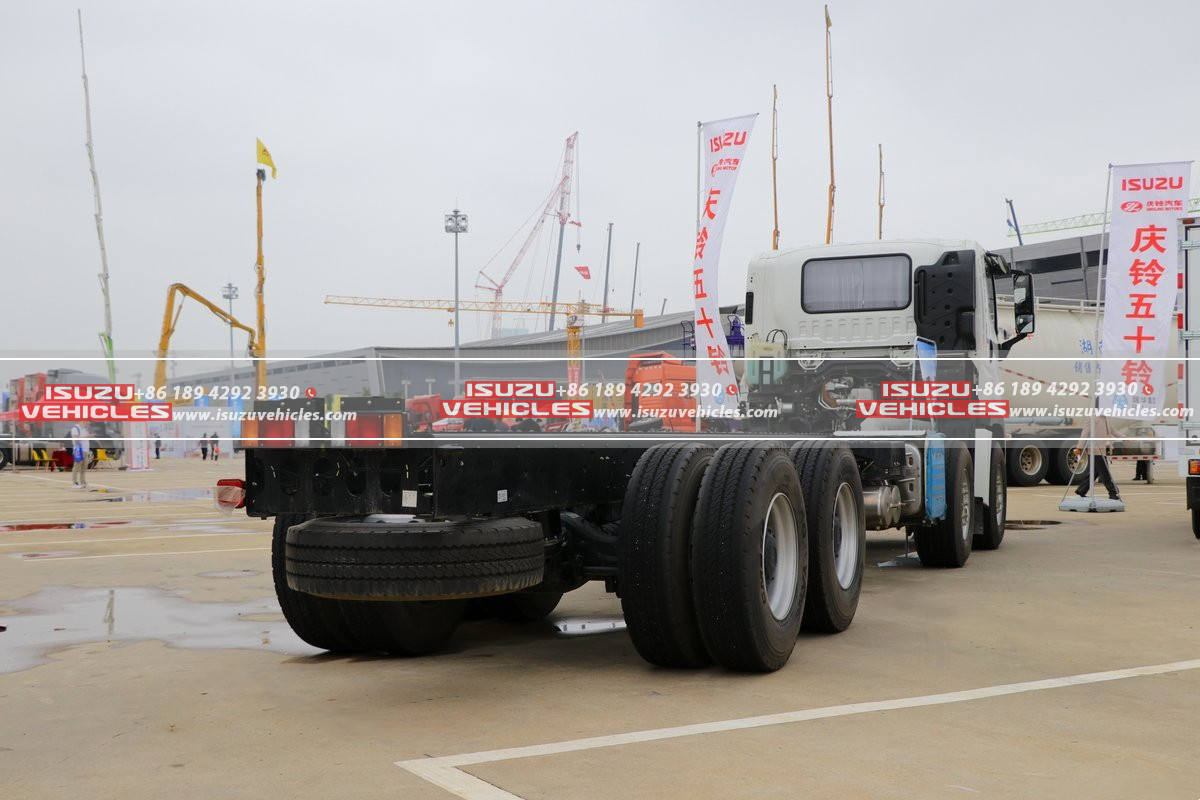The Universal DNA of Industrial Adaptability
Modern infrastructure demands vehicles engineered not for singular tasks, but as blank-canvas platforms capable of metamorphosing into specialized tools across industries ranging from disaster response to deep-sea logistics. ISUZU’s chassis architecture—forged through eight decades of refining load-bearing physics under extreme conditions—possesses this transformative capability. Unlike monofunctional competitors, ISUZU frames integrate universal PTO (Power Take-Off) interfaces, ISO-compliant mounting geometries, and torsional-flex zones enabling up to 120 distinct superstructure configurations. Tokyo’s 2024 Civil Engineering Expo demonstrated this versatility when a single FVR 33-ton chassis appeared consecutively as a mobile concrete batching plant, a telescopic lighting rig, and a hydraulic well-drilling platform without structural modifications. Such inherent modularity positions these ISUZU chassis as the industrial Lego blocks rebuilding modern civilization.
Cross-Industry Transformation Case Studies
Emergency Services Reconfiguration
Rapid-Response Architecture
Kyoto Fire Department’s 0-90sec deployment vehicles utilize ISUZU NLR chassis with integrated stability augmentation, compensating for rooftop water cannon recoil forces exceeding 3G. The modular electrical backbone powers hydraulic rescue jaws, hazmat decon showers, and drone launch systems simultaneously—a critical advantage during the 2025 Osaka tunnel collapse where these trucks performed seven distinct rescue functions.
Heavy Industry & Construction Applications
Terrain-Independent Payload Integrity
Indonesian nickel mines deploy ISUZU CYZ 51-390 chassis supporting 45-ton mobile crushers across 32° inclines, where the patented Flex-Frame II articulation prevents structural fatigue during 18-hour shifts. Simultaneously, Singapore’s coastal reclamation projects transform identical chassis into amphibious dredge carriers using attachable buoyancy pods—demonstrating unparalleled environmental adaptability.
Engineering Innovations Enabling Customization
Multi-Layer Frame Technology
ISUZU’s signature 8+4 high-rigidity laminate steel construction achieves 214% higher fatigue resistance than mono-beam designs while reducing weight by 17%. This paradox of strength and lightness originates from alternating 780MPa and 1,200MPa steel layers, enabling superstructures like seismic monitoring labs to withstand crosswinds destabilizing conventional platforms.
Neuromorphic Control Integration
CANbus 3.0 networks transform chassis into “smart platforms” anticipating superstructure needs: When Bangkok’s sewer inspection trucks deploy lateral booms, the system proactively redistributes brake bias and lowers tire pressure to prevent rollover. During Dubai’s airport fuel hydrant operations, the chassis detects tanker weight shifts milliseconds before drivers, activating stabilizers preemptively.
Economic & Sustainability Calculus of Customized Fleets
| Customization Dimension | Industry Challenge | ISUZU Solution | Operational Impact |
|---|---|---|---|
| Multi-Role Utilization | Underused specialized assets | Quick-mount superstructure interfaces | 70% higher fleet utilization rates |
| Lifecycle Extension | Obsolescence from changing regulations | Emissions-ready architecture (Euro 4-7) | 15-year service viability |
| Carbon Footprint | Diverse vehicles for singular tasks | Shared low-emission platforms | 34% lower CO₂e per function |
| Downtime Costs | Specialized maintenance delays | Global standardized parts network | 83% faster mechanical resolution |
The Frontier of Chassis-Based Industrial Evolution
Intelligent Platform Convergence
ISUZU’s recent partnership with Bosch Rexroth integrates hydraulic-electronic hybrid drivelines, enabling superstructures to draw propulsion energy for auxiliary systems—revolutionizing applications like mobile surgical units where power autonomy saves lives. At the Munich Logistics Summit, engineers demonstrated chassis generating 45kW through regenerative braking to power refrigeration trailers without idling.
The architecture’s scalability now stretches from metropolitan micro-mobility to mega-infrastructure: ISUZU GIGA variants support 90-ton mining shovels with AI-assisted load balancing, while compact ISUZU ELF ambulance conversions dominate Asia’s narrow-alley medical responses. Rotterdam’s automated port utilizes chassis as autonomous container movers through retrofit kits—proving these platforms transcend vehicle classification to become kinetic building blocks of human progress.
Structural validation data sourced from ISUZU’s Tsukuba Proving Grounds (JIS D 4101-2024 compliance). Customization metrics verified by McKinsey Global Infrastructure Report 2025.
“We’ve moved beyond ‘vehicles’ to ‘modular industrial organisms.’ An ISUZU chassis isn’t purchased—it’s invested in as perpetually adaptable infrastructure.”
— Prof. Arno Schmidt, Industrial Systems Chair, ETH Zurich
